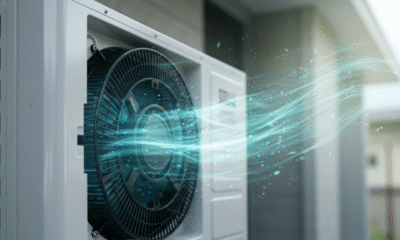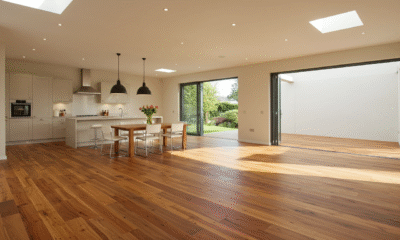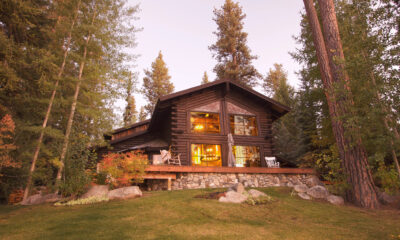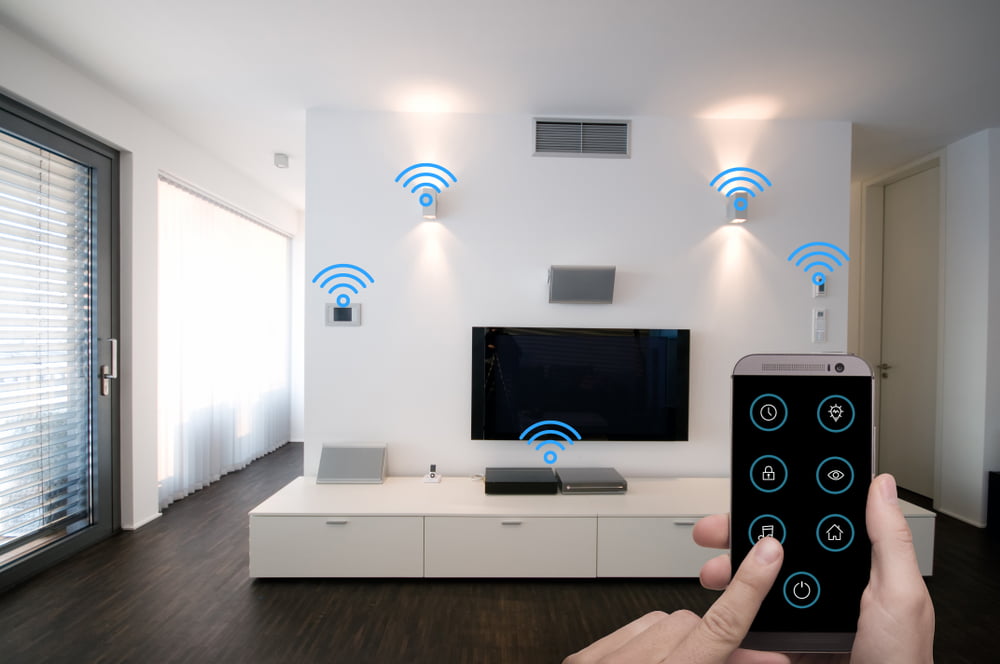
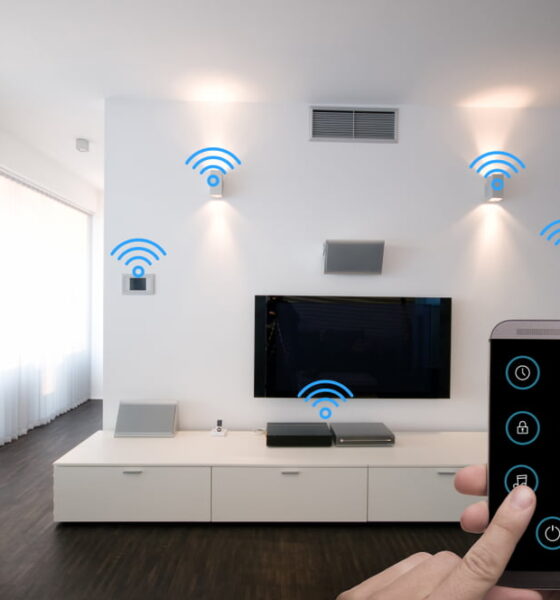
Environment
How To Build an Eco-Friendly Smart Home In 10 Easy Steps
NPR recently had a horrifying story about climate change. The authors pointed out that climate change is more widespread than ever and the results are disastrous.
Americans are going to have to do more to lessen their impact on the environment. One of the steps that they will have to take is finding ways to lower their carbon footprints at home.
One of the best ways that they can do this is by living in a smart home. Eco-friendly smart houses are actually a lot better for the planet.
Eco-Friendly Smart Houses Are the Newest Trend in Housing Developments
Smart homes are becoming more popular and are doing their part to help the planet. In order to appreciate their benefits, you need to see how they fit in the context of the history of housing throughout history.
For thousands of years, people have worked for their homes. Sometimes that meant having to save up to buy one, as was the case for most of the 1900s. Through a lot of human history that meant working the land for a farmstead or liege-lord. But these days, things are beginning to change.
Generally speaking, we have enough homes. In the United States alone, there are far more homes that there are people. Currently, most of those homes are essentially commodities rather than actual places people can afford to live due to a burgeoning housing bubble.
But eventually, that bubble will burst. Homes will be cheap. And when they are cheap, people will realize that homeownership has changed. No longer is a person expected to work for their home for their entire life. Now, your home can work for you through smart technology.
Smart home technology is also better for the planet. One study in Finland showed that smart homes can lower your carbon footprint by 12.78%. However, you have to know how to make smart home ownership a reality.
How do you integrate smart technology into a home to live an eco-friendlier lifestyle? Let’s go over 10 steps to do that.
Take Stock of Your Appliances
Smart appliances can do a lot to help the planet. Their biggest selling point is that they are more energy efficient, because they can turn themselves on when they don’t need to be used and can get the most work done without wasted effort. This lowers your carbon footprint and energy bill.
Anyone who adopted smart home technology early will know this already, but it actually started primarily in the kitchen. The first real smart appliances were things like ovens and freezers that would preheat or make ice one verbal command with your Alexa or Cortana devices.
For this reason, you should start by figuring out which appliances are due for an upgrade to smart devices.
Take Stock of Your Security
Traditional security systems are not very energy efficient, because they rely on VHS systems that are less energy efficient than more modern options. You can lower your carbon footprint with a smart security system.
Once you have that figured out, you should look at what kind of security system your home has. Smart homes are tightly integrated with security systems. Some of the reasons for this are obvious, while others are not so obvious. On the obvious end of things is the fact that smart homes are more valuable, and therefore more worth setting up layers of protection around.
On the less obvious end is the fact that they make the devices work better.
Start with Your Kitchen
Kitchens account for 15% of the average American’s food related carbon emissions. You can be eco-friendlier by using a more energy efficient smart kitchen.
As we said, smart homes started with the kitchen. You should too. That means making your oven into a smart oven. But that also means making your smoke detector a smart smoke detector. This means that both of these will be able to integrate with other devices.
Move to Your Air Conditioner Next
After you have replaced your oven and upgraded your smoke detector, you can adapt your air conditioner to smart technology too. This will allow it to communicate with the oven, turning on to cool down the room whenever the oven turns on. This will make it more energy efficient to lower your carbon footprint.
The air conditioner is one of the most energy intensive parts of any house. Making this into a smart device will save you the most money of all of these devices, even the oven.
Then Work on Your Security System
We have been mainly focused on domestic appliances. Now is a good time to start laying the groundwork for your security system. That starts with an alarm that uses motion sensors on your doors and pressure sensors on your windows.
These will feed into an alarm system that detects if anyone comes into your home when they are not supposed to. Just be sure to program the security system to trip the alarm during the times you are not home and have a delay when you are expecting to be home.
Connect Your Windows to Your Air Conditioner
Once the alarm system has pressure sensors on your windows, you can use those sensors to determine how hot it is, as well as how hot it is going to be. This allows your air conditioner to predict the heat much better.
You can even get self-fogging windows if you want to be really fancy. These will help keep your home cool, which will also let you keep your energy costs down.
Get Smart Lights
Lights also use a lot of energy that takes its toll on the planet, so using smart lights will be better for the planet. Your alarm’s motion sensors can also be used to detect when someone is in a room. That means you can set up smart lights that turn off when a room is empty.
Connect Your Motion Sensors to a Roomba
This connection is highly advanced, but also quite intuitive once you set it up. The basic idea is that your Roomba will know which rooms are the dirtiest by using the motion sensors to determine which rooms are used the most.
This will allow the Roomba to plot a path of cleaning, using the motion sensors to help it avoid obstacles and people. If you want, you can even have it return to a charging station after.
Set up Security Cameras
Smart security cameras are better than normal security cameras due to their versatility. Right out of the box you are able to program them to behave in certain ways. This means they can be set to record all the time, stream all the time, or do either of those things in response to movement. Because they have motion sensors built in, they can supplement other sensors.
Secure Your Wireless Network
Each smart device will have its own security protocols, but it is best if you ensure their security by protecting them where they all meet up: Your wireless internet network.
It should be noted that if your smart devices connect to each other via Bluetooth, then that might be more difficult to secure. Bluetooth has long been known for security flaws, meaning that connections via this method opens the door for hackers to take control of your home.
Switch to a Smart Home to Lower Your Carbon Footprint
That last line probably makes some people worry about the inherit risks of building a smart home. But the truth is, the amount of risk created by technology is massively offset by the amount of risk reduced by it. Your alarm system, for instance, will be much more reliable.
But it is not only that. Your oven will be more responsive and shut off before it can damage anything, your air conditioning will save energy, your lights will stay on for less time, and so many more little advantages. All from a smart home.


 Environment9 months ago
Environment9 months agoAre Polymer Banknotes: an Eco-Friendly Trend or a Groundswell?

 Environment11 months ago
Environment11 months agoEco-Friendly Home Improvements: Top 7 Upgrades for 2025

 Features8 months ago
Features8 months agoEco-Friendly Cryptocurrencies: Sustainable Investment Choices

 Features9 months ago
Features9 months agoEco-Friendly Crypto Traders Must Find the Right Exchange
